Exhibition explores ancient origins of modern concept and organization of time in the Western world
Late Babylonian Cuneiform Tablet with Horoscope of Aristokrates, Uruk. Late 3rd century BCE. Clay. H. 6 cm; W. 4 cm. Yale Babylonian Collection, New Haven: MLC 2190 © Yale Babylonian Collection.
NEW YORK, NY.- The ancient Greeks and Romans contributed more than any other past civilization to the rise of time’s dominion over individual and public life. Time and Cosmos in Greco-Roman Antiquity, on view at the Institute for the Study of the Ancient World, NYU, from October 19, 2016 through April 23, 2017, explores the ways in which they organized time, marked its passage, and linked it to their understanding of the larger universe. The exhibition brings together more than 100 objects from international collections, comprising both tools of time reckoning and items—many of them rarely on public display—that illuminate the social role, perception, and visualization of time and its relationship to the cosmos. In so doing, it opens a window onto the roots of our modern system of time measurement, as well as how our understanding of it influences our conceptions of the world and our place in it.
Time and Cosmos is curated by Alexander Jones, Professor of the History of the Exact Sciences in Antiquity and Interim Director, ISAW.
Roundel with Bust of Atargatis-Tyche and Zodiac, Petra, Jordan, ca. 50–150 CE. Micaceous Quartz Limestone. H. 29.5 cm; W. 35.6 cm; D. 13.3 cm. Cincinnati Art Museum, Museum Purchase: 1939.233. Photograph: Cincinnati Art Museum, Ohio, USA/Bridgeman Images
ISAW Exhibitions Director Jennifer Y. Chi says, “ISAW exhibitions examine ancient civilizations and cultures from across the globe, and relate them to our lives today. Time and Cosmos in Greco-Roman Antiquity is a particularly fascinating example of this. The recurring sight of people checking the time on their cellphones, or responding to a beep alerting them to an upcoming event, are only a few modern-day reminders of time’s sway over public and private life. Yet while rapidly changing technology gives timekeeping a contemporary cast, its role in organizing our lives owes a great deal to the ancient Greeks and Romans. We are thrilled to present this fascinating and important exhibition, and grateful to the many lenders that have made it possible.”
Statuette of Atlas Bearing Ornamental Spherical Sundial, Tor Paterno, near Ostia, Possibly 2nd century CE. Marble. H. 48.4 cm; W. 36.5 cm; D. 28.8 cm. Sir John Soane's Museum, London, M1254. By courtesy of the Trustees of Sir John Soane's Museum, London © Sir John Soane’s Museum, London
The ancient Greeks and Romans conceived of the cosmos, or universe, as a self-contained space in which Earth stood at the center, surrounded —and profoundly affected—by the constant motions of the heavenly bodies and the constellations of the zodiac. In developing time-keeping devices that explicitly aligned the passage of time with these movements, they linked time to the celestial powers that they believed shaped the environment and human destiny. As Professor Jones notes in his introduction to the exhibition catalogue, “What distinguishes our experience of time from that of the Greek or Roman is that our time technology . . . conceals the science on which it is based, where ancient time-telling devices were individual, local illustrations of the cosmology in which their designers believed.”
Frieze from a Roman Sarcophagus Representing Putti with Sundial, Unknown, ca. 140–160 CE. Marble. H. 34.5 cm; W. 23 cm; D. 7.4 cm. Musée du Louvre, Paris, Département des Antiquités grecques, étrusques et romaines, MA1341 © RMN-Grand Palais / Hervé Lewandowski / Art Resource, NY
Time and Cosmos explores and interweaves the practical and iconographic aspects of time and its relationship to the heavens. The exhibition’s opening gallery provides an overview of timetelling technology with a display of about a dozen sundials—the emblematic clock of GrecoRoman antiquity—and water clocks, devices that would have been found in public places such as gymnasia, as well as on private estates. The examples on view encompass an enormous diversity of historical periods, geography, and geometry, ranging from one of the earliest Greek sundials in existence, made in Asia Minor during the early 3rd century BCE, to later examples from Greece, Italy, North Africa and elsewhere.
Fragment of Egyptian Clepsydra Representing Philip Arrhidaeus Offering to Egyptian Deities, Tell el-Yahudiya, Egypt (?), ca. 320 BCE. Basalt. H. 34 cm; W. 30 cm; D. 7 cm. The British Museum, EA938. The British Museum © Trustees of the British Museum
Another highlight is a Roman mosaic from a villa in Pompeii, dating from the first century BCE– first century CE, that depicts the Seven Sages, or Plato’s Academy, gathered in an olive grove. The superbly crafted image brings time and cosmos together, with one of the philosophers explaining the globe of the heavens, while a pillar topped by a sundial, representing daytime, is in the center of the background, and oil lamps, representing nighttime, are depicted on the left side. Elsewhere, a superlative second–fourth century CE marble relief depicts the Roman god Mithras slaying a bull. The image is circled by representations of twelve zodiacal signs, organized so that Scorpio is simultaneously in its place in the zodiac and participating in the sacrificial act.
Roman Mosaic Depicting the Seven Sages ("Plato's Academy"), Villa of Titus Siminius Stephanus, Pompeii, 1st century BCE–1st century CE. Stone. H. 96 cm; W. 94 cm. Museo Archeologico Nazionale di Napoli, 124545 © Institute for the Study of the Ancient World / Guido Petruccioli, photographer.
In the second gallery, Time and Cosmos explores time in both the private and public spheres, with examples of the material objects that gave temporal structure to the daily life of both individuals and the community in such areas as religion, commerce, agriculture, and law.
Among these objects are six portable sundials. Precursors of the modern-day watch, these were prestige objects largely owned and used by those at the upper echelons of society. But they were also used by professionals, as seen here in a remarkable installation of objects from a physician’s tomb from the late first century CE, where a portable sundial was deposited along with medical instruments and pills for eye ailments. Another example of a portable sundial provides a superb example of ancient precision metalworking, with nested rings that functioned as images of circles on the celestial sphere.
Portable Universal Sundial, 1st–4th century CE, Near Bratislava (?), Bronze. H. 6.4 cm; W. 6.1 cm; D. 2.5 cm. Museum of the History of Science, University of Oxford, 51358. © Museum of the History of Science, University of Oxford.
Much of communal life, from feast days, to religious rituals, to the harvest, to local government, unfolded according to publicly displayed calendars that measured time in months and years rather than hours. Greek calendar inscriptions typically provided a month-by-month listing of festivals, sometimes specifying the animals to be sacrificed for each one, while the ancient Romans also used publicly displayed calendars as a means of civic and cultural organization: Dates when the courts and assemblies could or could not meet were inscribed or painted, as were various festivals and other key events. The (probably) first-century CE calendar known as the Menologium Rusticum Colotianum includes a range of information for each month. For the month of January, for example, inscriptions range from measurements (the month has 31 days, the days are 9 ¾ hours long), to astrological information (the sun is in Capricorn), to agricultural and religious activities to be undertaken (“Stakes are to be sharpened,” “Willow and cane to be felled,” and “Sacrifices are made to the Di Penates,”).
Roman Calendar Inscription (Menologium Rusticum Colotianum) with Zodiac, Festivals, and Agricultural Activities, 1st century CE, Near the Palatine, Rome. Marble. H. 66.4 cm; W. 41.3 cm; D. 38.7 cm. Museo Archeologico Nazionale di Napoli, 2632 © Institute for the Study of the Ancient World / Guido Petruccioli, photographer.
Time and Cosmos includes several digital displays, including one in this gallery that is devoted to the Antikythera Mechanism, a sophisticated simulator of time cycles and the motions of the sun, moon, and planets. Discovered in 1900–01, when excavation of an ancient Greek shipwreck uncovered pieces of a bronze device consisting of complex systems of gears and dials, it is today recognized as the most important artifact of ancient science that archaeology has ever brought to light.
Conical Sundial with Oscan Dedicatory Inscription, Stabian Baths, Pompeii, ca. 100 BCE. Marble. H. 43 cm; W. 50.5 cm; D. 23 cm. Museo Archeologico Nazionale di Napoli, 2541 © Institute for the Study of the Ancient World / Guido Petruccioli, photographer.
Quadruple Vertical Sundial with Inscription, Little Metropolitan Church, Athens, ca. 300 CE. Marble. H. 50.8 cm; W. 99 cm; D. 32 cm. The British Museum, GR 1816,0610.186 © Trustees of the British Museum.
Egyptian Miniature Vertical Sundial, Unknown, Possibly 2nd half of the 1st millennium BCE. Alabaster. H. 6 cm; W. 5.8 cm. Musée du Louvre, Paris, Département des Antiquités égyptiennes, E11738 © Musée du Louvre, Dist. RMN-Grand Palais / Christian Decamps / Art Resource, NY
Double Vertical Sundial, ca. 100 BCE or 2nd century BCE, Oikos of Dionysos, Delos. White Marble. H. 29.6 cm; W. 21 cm; D. 14 cm. Archaeological Museum, Delos © Institute for the Study of the Ancient World / Orestis Kourakis, photographer.
Roofed Spherical Sundial with Greek Inscriptions, Carthage (?), ca. 1st–2nd century CE. Marble. H. 54 cm; Diam. 74 cm; D. 34 cm. Musée du Louvre, Paris, Département des Antiquités grecques, étrusques et romaines, MNE1178/MA 5074 © RMN-Grand Palais / Hervé Lewandowski / Art Resource, NY.
Horizontal Sundial with Greek Inscriptions, Pompeii, Before 79 CE. Marble. H. 53 cm; W. 34.5 cm; D. 3 cm. Museo Archeologico Nazionale di Napoli, 2476 © Institute for the Study of the Ancient World / Guido Petruccioli, photographer.
Conical Sundial, Pergamon, Roman. Marble. H. 55.2 cm; W. 20 cm; D. 18.5 cm. Musée du Louvre, Paris, Département des Antiquités grecques, étrusques et romaines, MA2880 © RMN-Grand Palais / Thierry Olivier / Art Resource, NY
Portable Sundial in the Shape of a Ham, Villa dei Papiri, Herculaneum, Late 1st century CE. Bronze. H. 11.6 cm; W. 8 cm; D. 1.7 cm. Museo Archeologico Nazionale di Napoli, 25494 © Institute for the Study of the Ancient World / Guido Petruccioli, photographer.
Portable Universal Sundial with Gearwork Calendrical Apparatus, Unknown, ca. 500 CE. Brass. Sundial: Diam. 13.5 cm; D. 0.3 cm. Gear A: Diam. 5.4 cm; D. 1.0 cm. Gear B: Diam 3.2 cm; D. 2.8 cm. Suspension Arm: H. 12.7 cm; W. 3.0 cm; D. 1.8 cm. The Science Museum, London, 1983-1393 © Science Museum / Science & Society Picture Library.
Portable Armillary Sundial, ca. 250–350 CE, Octagon, Philippi. Copper Alloy. Outer Diam. 7.2 cm. Archaeological Museum of Philippi, Krinides © Hellenic Ministry of Culture and Sports—Archaeological Receipts Fund. Courtesy of the Ephorate of Antiquities of Kavala-Thasos / Orestis Kourakis, photographer
Roman Mosaic Depicting Anaximander with Sundial, Johannisstraße, Trier, Early 3rd century CE. Stone in Metal Frame. H. 209 cm; W. 188 cm. Rheinisches Landesmuseum Trier, 1907,724 © GDKE / Rheinisches Landesmuseum Trier, Photo: Th Zühmer
Statuette of Grieving Slave with Sundial, Necropolis, Myrina, Hellenistic (?). Terracotta. H. 19 cm; W. 7.5 cm. National Archaeological Museum, Athens, A 5007 © Institute for the Study of the Ancient World / Orestis Kourakis, photographer
Statuette of Nemesis with Portrait Resembling the Empress Faustina I, Egypt, ca. 150 CE. Dolomitic Marble. H. 46.4 cm; W. 20.3 cm; D. 12.7 cm. The J. Paul Getty Museum, Malibu, 96.AA.43. The J. Paul Getty Museum, Villa Collection, Malibu, California. Digital image courtesy of the Getty's Open Content Program.
Late Babylonian Contract Tablet with Astrological Ring-Seal Impression, Bīt Reš Temple Archive, Uruk, 208 BCE. Clay. H. 8.7 cm; W. 10.4 cm; D. 3.0 cm. Yale Babylonian Collection, NCBT 2306. © Yale Babylonian Collection
Late Babylonian Seal Stamp Representing Goat-Fish (Capricorn), Babylonia, 600 BCE. Bluish Chalcedony. H. 1.8 cm W. 2.5 cm; D. 2 cm. The Pierpont Morgan Library, New York. Morgan Seal 803. The Pierpont Morgan Library, New York.
Byzantine Silver Plate Depicting Aratus and Urania, Unknown, ca. 6th century CE. Silver. Diam. 23.2 cm. Private collection, UK.
'Altar' with Zodiacal Frieze and Heads of the Twelve Gods, Gabii, Latium, ca. 117–138 CE. Marble. Diam. 83.5 cm; D. 26.5 cm. Musée du Louvre, Paris, Département des Antiquités grecques, étrusques et romaines, MA666. © RMN-Grand Palais / Hervé Lewandowski / Art Resource, NY
Gem Engraved with Ram's Head (Aries), Unknown, 1st century BCE–3rd century CE. Carnelian. H. 1.3 cm; W. 1.1 cm. American Numismatic Society, 0000.999.35383. Courtesy of The American Numismatic Society © American Numismatic Society
Krater with Reliefs of Weekday Gods and Mithraic Inscription, ca. 280–315 CE, Pottery District, Pacelliufer, Trier. Terracotta. H. 30 cm; Diam. 16.7 cm; Rheinisches Landesmuseum Trier, 1933,513. © GDKE / Rheinisches Landesmuseum Trier, Photo: Th Zühmer.
Statuette of Tutela with Planetary Divinities, ca. 150–220 CE, Mâcon, France. Silver with Gilding. H. 13.9 cm; W. 6 cm; D. 4.2 cm. The British Museum, GR 1824,0424.1 © Trustees of the British Museum
Astrologer's Zodiacal Board (Tabula Bianchini), Rome, 2nd century CE. Marble. H. 77 cm; W. 78 cm. Musée du Louvre, Paris, Département des Antiquités grecques, étrusques et romaines, MA 540. © RMN-Grand Palais / Hervé Lewandowski / Art Resource, NY
Astrologer's Zodiacal Boards and Covers, 2nd century CE, Grand, Vosges, France. Ivory, Wood, Gilding, and Pigment. H. 18.6 cm; W. 28 cm. Musée départemental d’art ancien et contemporain, Épinal (Vosges, France), 2013.0.217. © Institute for the Study of the Ancient World / Guido Petruccioli, photographer
Papyrus with Greek Horoscope of Anubion Son of Psansnos, 2nd century CE, Thebes, Egypt. Papyrus. H. 28 cm; W. 23 cm. Musée du Louvre, Paris, Département des Antiquités égyptiennes, N2342 © RMN-Grand Palais / Art Resource, NY
Gem Engraved with Zeus (Jupiter) Seated on Stool, 1st century BCE–3rd century CE. Carnelian.H. 1.9 cm; W. 1.5 cm. American Numismatic Society, 0000.999.33931. Courtesy of The American Numismatic Society © American Numismatic Society
Gem Engraved with Sol (Helios) in Four-Horse Chariot, ca. 2nd–3rd century CE. Red and Green Jasper. H. 3.2 cm. The Metropolitan Museum of Art, 81.6.297. Gift of John Taylor Johnston, 1881 © The Metropolitan Museum of Art. Image source: Art Resource, NY
Gem Engraved with Selene (Luna) Holding Torch and Driving Two-Horse Chariot, 1st century BCE–3rd century CE. Convex Brown Paste in Imitation of a Sard. Diam. 1.3 cm. American Numismatic Society, 0000.999.33860. Courtesy of The American Numismatic Society © American Numismatic Society
Gem Engraved with Rudder (Ascendant), ca. 1st–3rd century CE. Carnelian. Ring: H. 1.74 cm; W. 2.25 cm; D. 1.87 cm. Antikensammlung, Staatliche Museen zu Berlin, FG 6625. © bpk, Berlin / Antikensammlung, Staatliche Museen zu Berlin / Johannes Laurentius / Art Resource, NY
Gem Engraved with Hermes (Mercury), ca. 1st century BCE–3rd century CE. Yellow Beryl, or Topaz. H. 1.5 cm. The Metropolitan Museum of Art, 81.6.74. Gift of John Taylor Johnston, 1881 © The Metropolitan Museum of Art. Image source: Art Resource, NY
Gem Engraved with Tyche (Fortuna), with Cornucopia and Rudder Amethyst, ca. 1st–2nd century CE. Amethyst. H. 1.9 cm. The Metropolitan Museum of Art, 81.6.187. Gift of John Taylor Johnston, 1881 © The Metropolitan Museum of Art. Image source: Art Resource, NY
Gem Engraved with Kronos (Saturn), 1st century BCE–3rd century CE. Carnelian. H. 1.2 cm. The Metropolitan Museum of Art, 81.6.53. Gift of John Taylor Johnston, 1881 © The Metropolitan Museum of Art. Image source: Art Resource, NY
Gem Engraved with Twins (Gemini), 1st century BCE–3rd century CE. Orange Carnelian. H. 1.9 cm; W. 1.5 cm. American Numismatic Society, 0000.999.33892. Courtesy of The American Numismatic Society © American Numismatic Society
Gem Engraved with Ares (Mars), ca. 1st century BCE–3rd century CE. Sardonyx. H. 1.7 cm. The Metropolitan Museum of Art, 81.6.123. Gift of John Taylor Johnston, 1881 © The Metropolitan Museum of Art. Image source: Art Resource, NY
Gem Engraved with Cricket Playing Aulos, and Sundial on Pillar, 1st century BCE–3rd century CE. Carnelia. H. 1.54 cm; W. 1.37 cm. Antikensammlung, Staatliche Museen zu Berlin, FG 6525. © bpk, Berlin / Antikensammlung, Staatliche Museen zu Berlin / Johannes Laurentius / Art Resource, NY
Gem Engraved with Aphrodite (Venus), 1st century CE, Italy (?). Amethyst. H. 2.3 cm; W. 1.6 cm. The J. Paul Getty Museum, Malibu (82.AN.162.34). The J. Paul Getty Museum, Villa Collection, Malibu, California, Gift of Stanley Ungar. Digital image courtesy of the Getty's Open Content Program.
Gem Engraved with Crab (Cancer), 1st century BCE–3rd century CE. Brown-and-Gray-Banded Agate. H. 1 cm; W. 1.3 cm. American Numismatic Society, 0000.999.33950. Courtesy of The American Numismatic Society © American Numismatic Society
Gem Engraved with Lion (Leo), Star, and Crescent Moon, 1st century BCE–3rd century CE. Red-Orange Jasper. H. 0.9 cm; W. 1.1 cm. American Numismatic Society, 0000.999.33970. Courtesy of The American Numismatic Society © American Numismatic Society
Gem Engraved with Nike (Victoria) Driving Chariot and Zodiac, Syria, 1st century BCE. Brown Sard. Diam. 1.4 cm. The J. Paul Getty Museum, Malibu (84.AN.1.39). The J. Paul Getty Museum, Villa Collection, Malibu, California, Gift of Stanley Ungar. Digital image courtesy of the Getty's Open Content Program.
Gem Engraved with Lion (Leo), 1st century BCE–3rd century CE. Heliotrope. H. 2.53 cm; W. 2.06 cm. Antikensammlung, Staatliche Museen zu Berlin, FG 8699. © bpk, Berlin / Antikensammlung, Staatliche Museen zu Berlin / Johannes Laurentius / Art Resource, NY
Gem Engraved with Goat (Capricorn), Rudder, and Globe, Samos, 1st century BCE–3rd century CE. Brown Glass Paste. Diam. 1.05 cm. Antikensammlung, Staatliche Museen zu Berlin, FG 6062. © bpk, Berlin / Antikensammlung, Staatliche Museen zu Berlin / Johannes Laurentius / Art Resource, NY
Cameo Representing Double Capricorn with Portrait of Emperor Augustus, Egypt (?), ca. 27 BCE–14 CE. Sardonyx and Gold. H. 2.8 cm. The Metropolitan Museum of Art, 29.175.4. Gift of Milton Weil, 1929 © The Metropolitan Museum of Art. Image source: Art Resource, NY
Ring with Horoscope and Bust of Asclepius, 4th century CE, Tartus, Syria. Gold and Niello. Diam. 2.5 cm. Virginia Museum of Fine Arts, 67.52.11. Adolph D. and Wilkins C. Williams Fund © Virginia Museum of Fine Arts, Travis Fullerton, photographer
Aureus Issued by Augustus: (reverse) Capricorn Holding a Globe. Minted in Colonia Patricia (Cordoba, Spain), RIC I (second edition) Augustus 125; ca. 18–17 BCE. Gold. Diam. 2.2 cm. American Numismatic Society, 1955.191.11. Courtesy of The American Numismatic Society © American Numismatic Society
Aureus Issued by Augustus: (reverse) Capricorn, RIC I (second edition) Augustus 521; ca. 19–18 BCE. Gold. Diam. 2 cm. American Numismatic Society, 1955.191.11. Courtesy of The American Numismatic Society © American Numismatic Society
Aureus Issued by Augustus: (obverse) Head of Augustus. Minted in Colonia Patricia (Cordoba, Spain), RIC I (second edition) Augustus 131; ca. 18–17 BCE. Gold. Diam. 2.1 cm. American Numismatic Society, 1944.100.39073. Courtesy of The American Numismatic Society © American Numismatic Societ
Aureus Issued by Antoninus Pius: (reverse) Felicitas Holding Capricorn. Minted in Rome, RIC III Antoninus Pius 131d; ca. 145–161 CE. Gold. Diam. 1.9 cm. American Numismatic Society, 1954.256.38. Courtesy of The American Numismatic Society © American Numismatic Society
Aureus Issued by Antoninus Pius: (obverse) Head of Antoninus Pius. Minted in Rome, RIC III Antoninus Pius 24; 139 CE. Gold. Diam. 1.8 cm. American Numismatic Society, 1972.62.2. Courtesy of The American Numismatic Society © American Numismatic Society
Aureus Issued by Hadrian: (reverse) Aion Standing in Zodiac, Holding Phoenix and Globe. Minted in Rome, RIC II 136; ca. 119–122 CE. Gold. Diam. 1.9 cm. Münzkabinett, Staatliche Museen zu Berlin, 18204693 © bpk, Berlin / Münzkabinett, Staatliche Museen zu Berlin / Dirk Sonnewald / Art Resource, NY
Aureus Issued by Hadrian: (obverse) Head of Hadrian. Minted in Rome, RIC II 109; ca. 119–122 CE. Gold. Diam. 1.9 cm. Münzkabinett, Staatliche Museen zu Berlin, 18204275 © bpk, Berlin / Münzkabinett, Staatliche Museen zu Berlin / Dirk Sonnewald / Art Resource, NY
Aureus Issued by Vespasian: (obverse) Head of Vespasian. Minted in Rome, RIC II, Part 1 (second edition) Vespasian 838; 76 CE. Gold. Diam. 1.9 cm. American Numismatic Society, 1954.256.9. Courtesy of The American Numismatic Society © American Numismatic Society
Aureus Issued by Vespasian: (reverse) Aeternitas Holding Busts of Sol and Luna. Minted in Rome, RIC II, Part 1 (second edition) Vespasian 839, 76 CE. Gold. Diam. 2 cm. American Numismatic Society, 1967.153.125. Courtesy of The American Numismatic Society © American Numismatic Society
Aureus Issued by Victorinus: (reverse) Hercules with Club in Right Hand and Lion Skin in Left, with Capricorn. Minted in Cologne or Trier (?), RIC V-2 23; ca. 269–271 CE. Gold. Diam. 1.9 cm. Münzkabinett, Staatliche Museen zu Berlin, 18218159 © bpk, Berlin / Münzkabinett, Staatliche Museen zu Berlin / Dirk Sonnewald / Art Resource, NY

/https%3A%2F%2Fprofilepics.canalblog.com%2Fprofilepics%2F1%2F0%2F100183.jpg)
/https%3A%2F%2Fstorage.canalblog.com%2F03%2F02%2F119589%2F96711876_o.jpg)
/https%3A%2F%2Fstorage.canalblog.com%2F11%2F31%2F119589%2F94773502_o.jpg)
/https%3A%2F%2Fstorage.canalblog.com%2F20%2F83%2F119589%2F94772815_o.jpg)
/https%3A%2F%2Fstorage.canalblog.com%2F26%2F72%2F119589%2F75604929_o.jpg)
/https%3A%2F%2Fstorage.canalblog.com%2F59%2F60%2F119589%2F26458628_o.jpg)






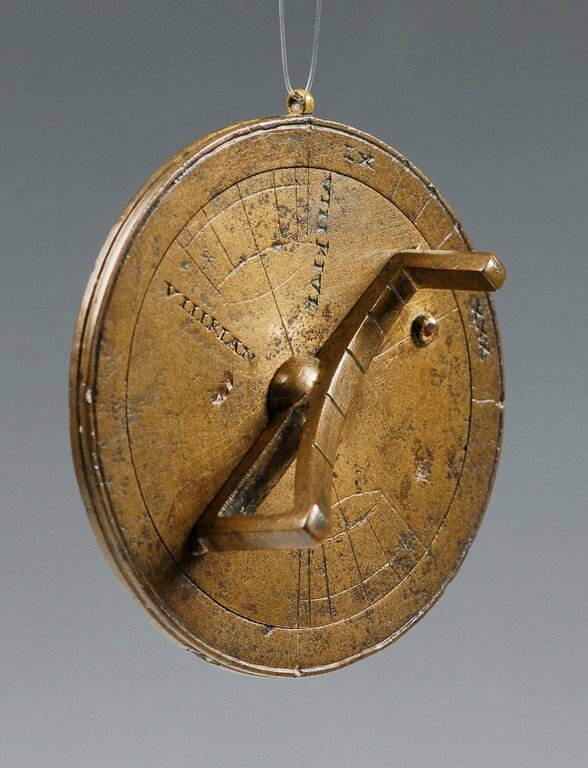




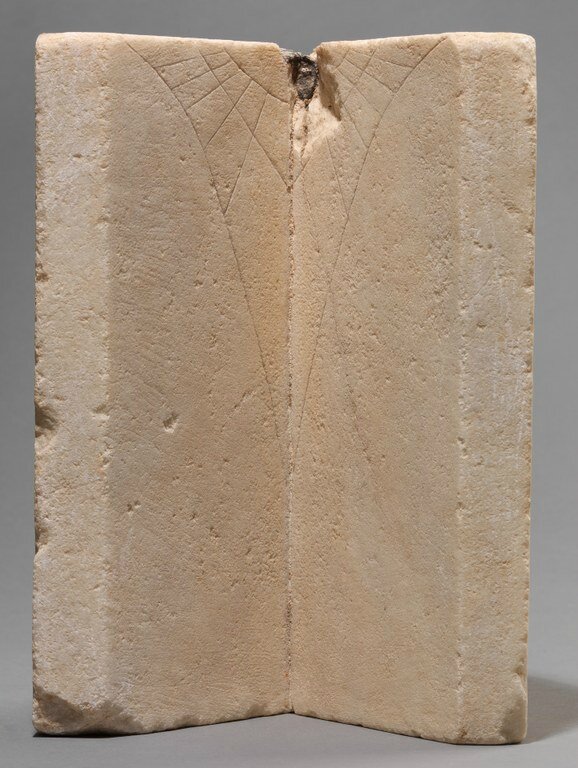

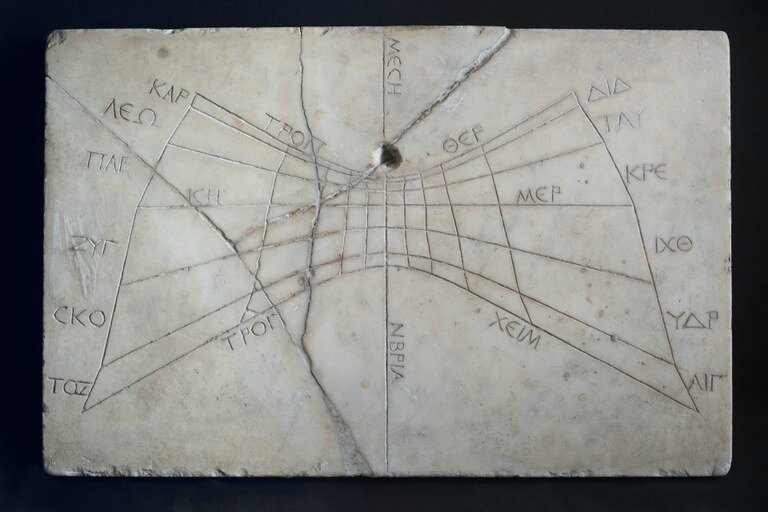








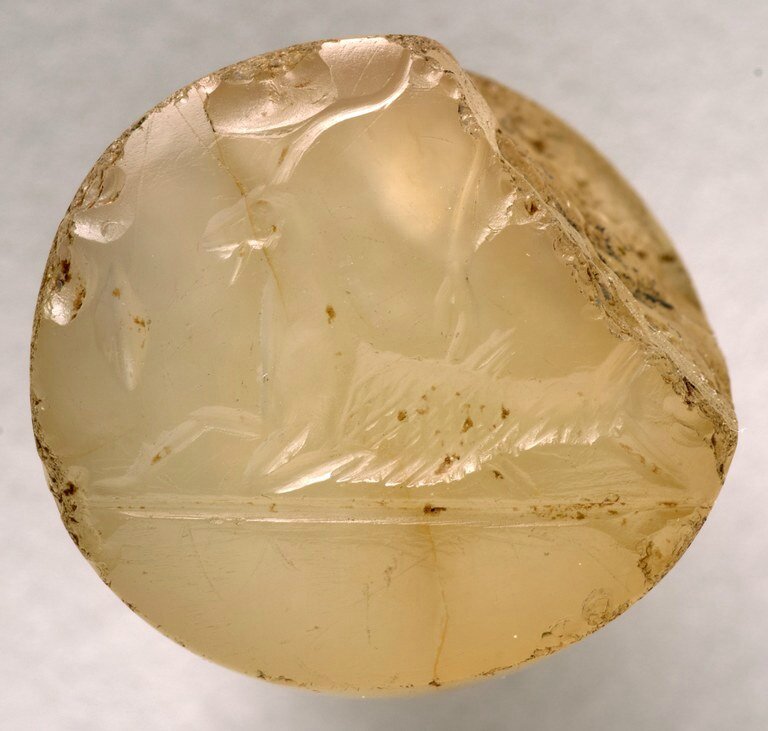















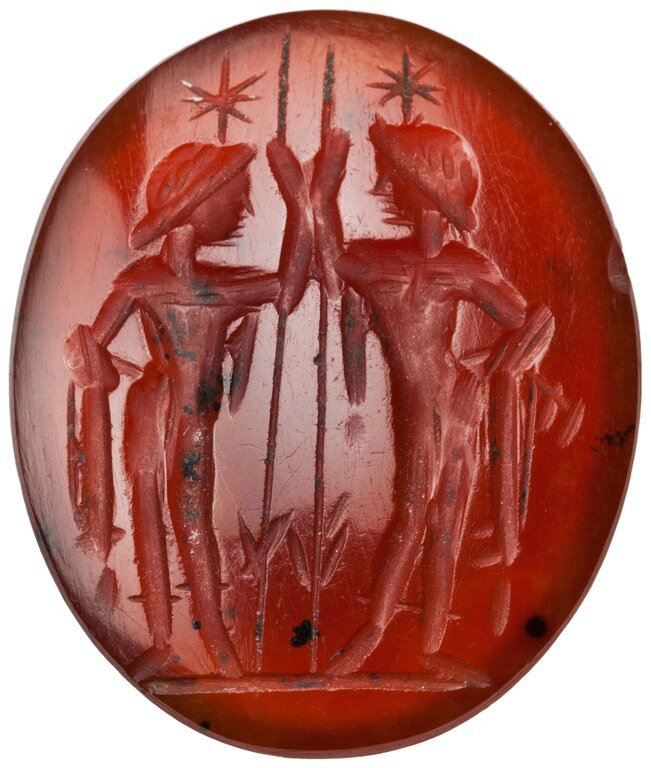






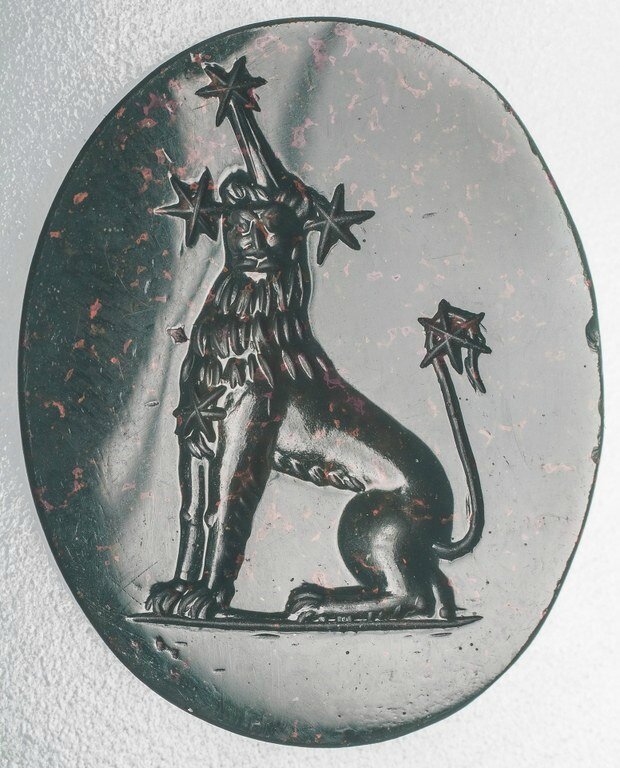















/image%2F1371349%2F20240418%2Fob_ac5c4c_telechargement.jpg)
/image%2F1371349%2F20240418%2Fob_709b64_304-1.jpg)
/image%2F1371349%2F20240418%2Fob_22f67e_303-1.jpg)
/image%2F1371349%2F20240417%2Fob_9708e8_telechargement.jpg)